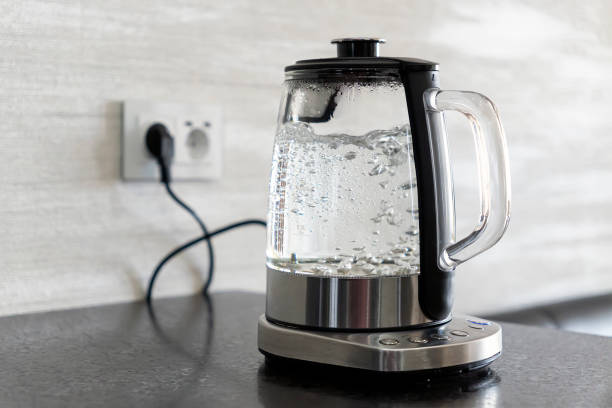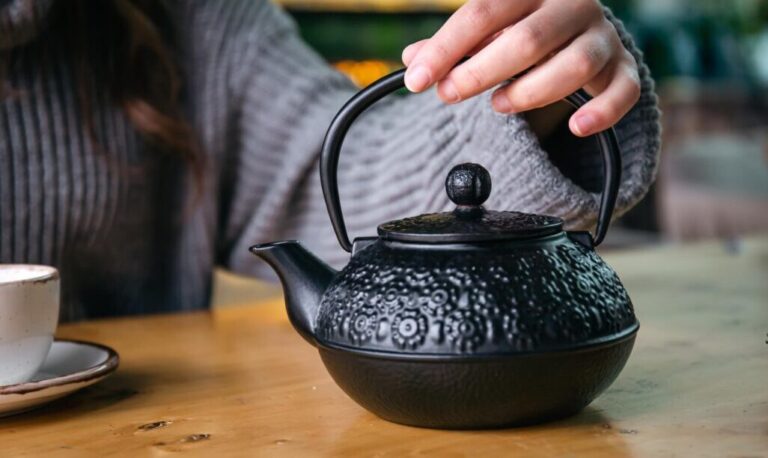How to Make Tea with a Kettle – Stovetop & Electric: The best ways
Steeping tea is a long-standing tradition that calms the body and soul. Whether you’re making a morning pick-me-up or an evening wind-down to relax, the secret to a perfect cup is all about how you warm the water. The best bets? Stovetop kettle or electric kettle.
Every kettle model has its perk—stovetop kettles provide retro ambiance and manual control, and electric kettles are precision and efficient all the way. Here in this guide, we will walk you through how to make tea with a kettle—whether you own one or the other—that way you’ll have a good cup all the time.
Table of Contents
Method 1: How to Make Tea with a Stovetop Kettle
A stovetop kettle is a basic device for most traditional kitchens. It’s ideal for boiling water for tea, and it functions very nicely for loose leaf tea or sachet tea when used with a teapot or teacup. Below you’ll learn about how to make tea with a kettle.
Step-by-Step Guide:
When to Add Tea: Before or After Boiling?
Never brew tea by placing the leaves or bag in the kettle. Rather, put the tea after boiling by pouring the hot water over it. It provides the best flavor and avoids over-boiling of the tea.
Best Suitable For:
- Fancy of loose leaf tea
- Those who like the traditional method of brewing
- Making a large number of servings in a teapot
Method 2: How to Make Tea Using an Electric Kettle
An electric kettle is a contemporary kitchen staple, particularly for hectic mornings or exact brewing. A lot of electric kettles incorporate temperature control options, ideal for brewing delicate teas. Below you’ll learn about how to make tea with a kettle.
Step-by-Step Guide:
Best Suitable For:
- Quick, accurate brewing
- Optimal temperature brewing of teas
- Office or in-transit tea enthusiasts
Tips for Best Results:
Use the Proper Tea-to-Water Ratio
- Loose tea leaf: 1 teaspoon for 8 oz (240 ml) of water
- Tea bags: 1 bag per cup
- Too much tea is bitter; too little is weak.
Monitor the Steeping Time
- Use a timer to prevent overstepping.
- Refer to the following general guidelines:
- Green: 1–3 minutes
- Black: 3–5 minutes
- Herbal: 5–7 minutes
Employ High-Quality Water
- Tap water can carry chlorine or minerals that affect flavor.
- You may avoid scale buildup and get the greatest flavor with filtered or spring water.
Pre-Warm Your Mug or Teapot
- Swirl a small amount of hot water in your cup before brewing to keep the tea temperature longer.
Clean Your Kettle Regularly
- Clean out mineral deposits monthly (particularly in hard-water regions).
- Use white vinegar or descaling solution.
Advanced Tips for Tea Enthusiasts:
Use a Digital Thermometer
If your kettle does not have temperature control, use a digital thermometer. Various teas require water at varying temperatures—using the correct one will ensure that you don’t scald delicate leaves like green or white tea.
Try Double-Steeping
Good loose-leaf teas, like oolong, are best suited for several infusions. Every step alters the taste. Just adjust the steeping time a step each time to optimize your leaves.
Try Blooming Teas
Blooming teas are hand-assembled clusters that splendidly unfold into flower shapes when steeped in hot water. They provide both taste and an exciting visual component, wonderfully beautiful in a clear glass teapot.
Store Tea Properly
The key to keeping tea’s scent and flavor is the right way to store it. Protect tea from strong scents, direct sunlight, and humidity by storing it in an airtight container. Because of this, your tea will keep for a longer time without going bad due to oxidation.
Common Mistakes to Avoid:
Boiling Green or White Tea
Blazing green or white tea leaves with boiling water produces a bitter, unpleasant taste. Employ lower temperatures of 160–185°F for these teas.
Brewing Directly in the Kettle
Never place tea leaves or tea bags in the kettle. It will ruin the appliance and taint your brew with a metallic flavor or off-taste.
Using Stale or Old Tea
Tea does go stale after a while. Use freshly stored tea to obtain the optimum taste and aroma.
Overfilling the Kettle
Overfilling will result in spilling on the boiling and prolong the time taken for heating. Fill up to the capacity level only.
Neglecting Kettle Maintenance
Mineral deposits (scale) both impair taste and kettle performance. Descaling regularly produces cleaner water and a tastier cup.
Preparing Tea for Multiple People:
- Use a Teapot for Batch Brewing
Brew tea in one large teapot to serve many guests at once.
- Adjust the Quantity of Tea
A teaspoon or tea bag is usually used per cup, with an additional one for the pot, so you can adjust the amount of tea according to serves.
- Heat Water in a Large Kettle or Batches
Employ a large kettle or heat water in batches so there is a quantity sufficient for everyone.
- Offer Opportunities for Customization
Offer milk, honey, slices of lemon, and sugar so that the guests may personalize the tea to their liking.
Pairing Tea with Food:
Enhance your tea time by matching it with snacks or meals:
| Tea Type | Best Pairings |
| Green Tea | Light pastries, sushi, salads |
| Black Tea | Toast, biscuits, scones |
| Herbal Tea | Fruits, cheese, crackers |
| Chai Tea | Spiced cookies, curries, breads |
FAQ’s About Tea Kettles:
Conclusion: The Wrap-up
Learning to steep tea with a kettle, stovetop or electric, is easy and worth it. At the proper water temperature, the proper ratio of tea to amount of water, and proper steeping time, you are then able to draw full depth, aroma, and character from each tea leaf.
Whether you are attracted to the vintage appeal of a whistling stovetop kettle or the convenience of an electric kettle with precise controls, the ideal cup of tea is always within a few thoughtful strides.







One Comment